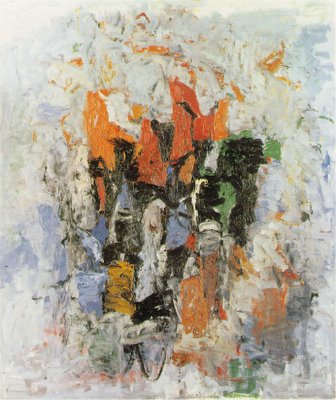


Anchored by a grayish or flesh-colored pink fields, painterly effects became an irreducible, essentialized subject. Guston applied the paint thickly in the abstract paintings - the brushstroke became subservient to non-objectivity in his hand, serving an end unto itself. It embodied coherence without overt meaning, a space defined by light rather than form, a favoring of color over image.
However it was generally considered that there was a crisis rather than a resolution in these paintings, not so much a fulfillment in this new way of painting, just a departure from the old way - an acknowledgement of the impossibility of the old way. He said in 1958 “I do not see why the loss of faith in the known image and symbol in our time should be celebrated as a freedom. It is a loss from which we suffer and this pathos motivates modern painting and poetry at its heart.”
Meanwhile, his critics saw a continuation of the expressive and political intentions of his earlier style even in his most formally abstract works. Frank O’Hara spoke of an “openly anxious ego-identification” with seemingly abstract clusters of paint. While Leo Steinberg likened Guston’s meshes of red and gray to bleeding tissue “a universe expanded from a surgeon’s cut.” For both critics there was a powerful sense of the body, as if the artist haunted the work in spite of his non-objective aims.
There was an obvious joy in Guston’s restraint, a dispersal of the artists’ self over the entire picture-making process. His paintings from this time became performances for him, each mark was carefully considered. He achieved an awareness of the material urgency of his medium - to achieve a continuous flow and consistency in handling, quickness of execution was of prime importance. There was a sense of urgent speech rather than the sense of a particular thing spoken.
(Robert Zaller's essay in Critical Inquiry, Autumn 1987 is a reference here - I don't know how to footnote on blogs!!)
No comments:
Post a Comment